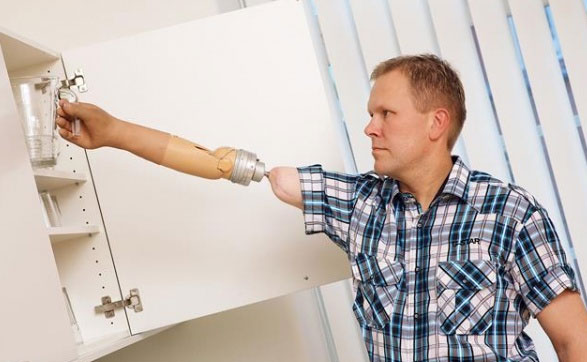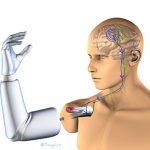
Back in February we were talking about the developments in pharmaceutical engineering which allowed the production of the A-Gear robotic arm. The device was the work of a team of people from 4 universities and was the first prototype of a device that allowed independent operation of the arms for Duchenne muscular dystrophy sufferers. Better mechanics and thinner, more flexible materials allow the wearer to use the supports discreetly underneath clothes and without stigma.
Last month news of further research in the area of pharmaceuticals and prosthesis development hit the headlines with a report on a new prosthesis. One that has been connected directly to bone, nerves and muscles, allowing the patient to have free mobility of the limb.
The prosthesis is the work of Dr Max Ortiz Catalan and the research was carried out at the Chalmers Technological University in Sweden in collaboration with the Sahlgrenska University Hospital. The implant company is Integrum AB who work with bone anchoring prosthetics. A patient with an arm amputated above the elbow has been trialling the device since 2013 and it has helped him get back to a normal working life. He has been able to resume his job as an operator of heavy machinery and can handle small delicate items like eggs.
How the prosthesis works

The device is made up of 2 parts; an implant and a prosthesis. Surgery is required to implant a titanium piece in to the bone and also a control system that connects electrodes to the muscles and nerves. A removable prosthesis then maintains the mechanical connection with the bone and an electrical connection with the electrodes. This part of the device is removable to allow the patient to get wet and do things like bathing.
The electrodes connected to the muscles generate a stable signal that allows the patient precise control to handle delicate things. It can also provide the same sensations as his own hand. The device is protected from interference such as retail store sensors
The use of a titanium implant allows the bone to grow around it, something that isn’t possible with other materials like stainless steel which generates a reaction. The use of this type of implant means that the inflammation, chafing and general discomfort of more traditional prosthesis does not occur. There are less components to irritate or disturb the skin, which makes it much easier to use and gives the user a much better quality of life.
There are currently about 400 people in the world who have a titanium implant, but only two of them have the system of electrodes implanted into the nerves and muscles. It is anticipated that there will be a further 10 patients who will receive the neural control system this year.
As with all new technology, expense factors heavily when trying to implement things on a larger scale. However, it is hoped that costs will come down, allowing many more amputees to benefit from this type of technology that will give them more freedom in their daily lives.
Click here to read more about the history of the work of Dr Max Ortiz Catalan
This site uses Akismet to reduce spam. Learn how your comment data is processed.


 Mail:
Mail: 




Leave a Comments